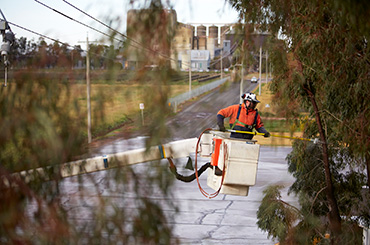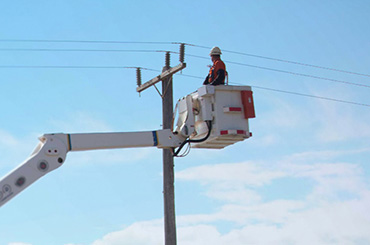Network news

22 December 2021
Essential Energy’s infrastructure, the poles and wires that transport energy back and forth to support businesses; that powers Councils and lights up homes must be resilient to impacts from a vast range of climates, weather patterns and local environmental factors.
Providing safe and reliable energy across a vast and varied geographic area involves a complex set of activities, but one of the most important requirements is making sure trees, branches and bushes are kept away from powerlines.
Essential Energy has recently finalised one of its most ambitious projects to date, adapting vegetation management function to optimise safety, cost, environmental sustainability, and risk.
The project is already reaping the benefits of the contemporary strategic review approach, including extensive engagement with external stakeholders. In addition to multi-million dollar forecasted cost savings, the strategy has resulted in industry-leading risk-based regulatory compliance standards, extensive partnership development and capability uplift for operational employees. Project lead, Heath Frewin, was awarded the Utility Arborist of the Year.
Central to the strategy is a climatic-based assessment for all vegetation. The network footprint is now categorised into different growing zones and vegetation management, such as tree trimming frequency, aligns to the relevant growing zone. This strategic approach will mean Essential Energy will be consulting with tree owners to seek removal of trees growing near powerlines that are incompatible and represent too high a risk for safety, reliability or cost. This will allow exceptions, understanding that some trees have significant community value. Council engagement is a crucial part of the new strategy; vegetation experts within the business are now working closely with Councils to engage on a joint approach to vegetation management.



